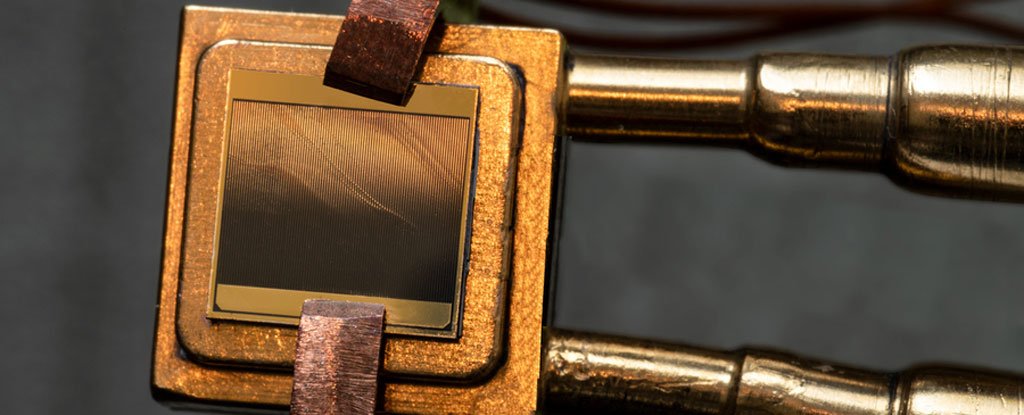Products You May Like
Scientists are hopeful that solid-state thermophotovoltaic (TPV) cells with no moving parts can achieve higher efficiencies at higher temperatures when it comes to converting heat into electricity – and lead the way to power grids based entirely on renewables.
One such TPV cell has now hit a new world record of 40 percent efficiency, researchers report. That’s better than the steam turbines traditionally used to turn heat into electricity, which typically max out at 35 percent and have upper-temperature limits too.
TPVs convert high-energy photons from white-hot heat sources into electricity. When combined with thermal batteries, they could capture energy from the Sun and keep it stored away, releasing electricity as and when needed.
“One of the advantages of solid-state energy converters are that they can operate at higher temperatures with lower maintenance costs because they have no moving parts,” says mechanical engineer Asegun Henry, from the Massachusetts Institute of Technology (MIT).
“They just sit there and reliably generate electricity.”
The thermophotovoltaic cell involved in the record-breaking conversion can generate electricity from heat sources at temperatures of 1,900 to 2,400 degrees Celsius (3,452 to 4,352 degrees Fahrenheit). Those temperatures are far too hot for conventional steam turbines to work at, because of the moving parts involved.
Now the efficiency of these cells is rising as well, making them more viable. The previous record stood at 32 percent efficiency, while most TPV cells manufactured to date have hovered around the 20 percent efficiency rate.
The efficiency record was measured using a heat flux sensor to measure the heat absorbed by the cell, which is around a centimeter squared in size. A high-temperature bulb was used to vary the amount of heat that the cell was exposed to, revealing that it was in fact suitable to be fitted into a larger system.
“We can get a high efficiency over a broad range of temperatures relevant for thermal batteries,” says Henry.
The efficiency improvement is mainly due to the materials used, which have what’s known as a low bandgap – a gap that electrons must cross for electricity to be generated. Here, the researchers have used higher bandgap materials, as well as multiple junctions (or material layers).
Three layers are used: a high bandgap alloy to capture high-energy photons to turn them into electricity, a low bandgap alloy to capture low-energy photons that slip through the first layer, and a gold mirror to reflect photons that have passed all the way through back to the heat source, thus minimizing wasted heat.
With the TPV cell now proven to be operational, reliable, and efficient, scientists can get on with the work of scaling it up and combining it with other elements to form a full energy production system – and one that doesn’t produce any carbon while in use.
“Thermophotovoltaic cells were the last key step toward demonstrating that thermal batteries are a viable concept,” says Henry. “This is an absolutely critical step on the path to proliferate renewable energy and get to a fully decarbonized grid.”
The research has been published in Nature.
